Explore the Best AI Image Gallery

5G: The Unseen Force Unleashing a New Era of Creative Expression
The fifth generation of cellular mobile communications, known as 5G, is more than just faster internet speeds. Its a technological revolution poised to fundamentally reshape how we create, consume, and interact with art, design, and entertainment. While the impact of 5G on industries like healthcare and transportation is widely discussed, its potential to unlock unprecedented levels of creativity remains largely unexplored.
A New Canvas for Artistic Expression
Imagine artists wielding virtual reality headsets powered by lightning-fast 5G connections, sculpting immersive 3D worlds in real time. Picture musicians collaborating on groundbreaking compositions across continents, their instruments seamlessly synchronized through low-latency networks. This is the promise of 5G – a world where creativity knows no physical boundaries.
Wearable technology, already making waves in the creative field, will be turbocharged by 5G. Artists can utilize haptic feedback suits to experience their creations physically, dancers can choreograph intricate movements guided by real-time data analysis, and designers can visualize and manipulate virtual prototypes with unprecedented accuracy.
The Power of Real-Time Collaboration
5Gs ultra-low latency enables instantaneous communication between devices, opening up exciting possibilities for collaborative creativity. Imagine a team of writers crafting a novel chapter together, each input appearing instantly on everyones screen. Or consider architects designing a skyscraper, with every change made in one location reflected seamlessly across all workstations.
This real-time collaboration transcends geographical limitations, allowing artists and creators from around the globe to converge on shared projects, fostering innovation and cultural exchange like never before.
Bridging the Gap Between Physical and Digital
5G will play a pivotal role in blurring the lines between the physical and digital realms. Augmented reality (AR) experiences, powered by 5Gs speed and responsiveness, can transform art installations into interactive masterpieces. Imagine walking through a museum exhibit where sculptures come to life with projected animations or historical figures deliver personalized narratives.
Similarly, virtual reality (VR) will become more immersive and accessible thanks to 5G. Artists can create breathtaking VR worlds for viewers to explore, offering new dimensions of artistic expression and storytelling.
Ethical Considerations in a Connected World
As with any powerful technology, 5Gs impact on the creative industry raises important ethical considerations. Data privacy must be paramount as artists increasingly rely on digital platforms and tools. Transparency regarding the use of AI in creative processes is crucial to ensure human agency remains at the forefront.
Furthermore, its essential to consider the potential for algorithmic bias and ensure that 5G-powered tools do not perpetuate existing inequalities within the creative sector.
The Future: A Tapestry Woven by Technology and Imagination
The convergence of 5G, wearable tech, AR/VR, and AI is poised to usher in a golden age of creativity. Imagine art galleries that respond to visitors emotions, personalized music compositions generated by algorithms that learn our tastes, and interactive theater experiences that blur the lines between performer and audience.
5G will not replace human creativity; instead, it will empower artists with new tools and technologies to amplify their visions, connect with audiences in unprecedented ways, and push the boundaries of artistic expression. The future of creativity is a collaborative tapestry woven by technology and imagination – a future where the possibilities are truly limitless.




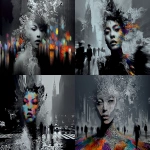






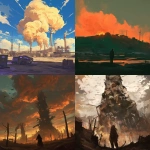

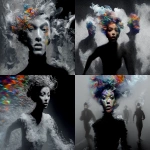


](https://images.ai-img.art/thumbnails/150/847809c77ca9a73b68bc190e6efb06fec87157685a243730d5a66a403b0e6e10.webp)





](https://images.ai-img.art/thumbnails/150/685ae68cfab93a7e59a71206867b060c45bd6fd3cd561c4fe60fca514b09c5f8.webp)

](https://images.ai-img.art/thumbnails/150/7cf5a08238f29c821f52bb4f63db48af0b7f633ff3b9f7253074d78ced9ff6f6.webp)


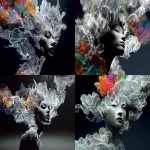








](https://images.ai-img.art/thumbnails/150/bd056a4718c27444e064198762f8dc8ffa1f74f1afd7dcda8d5cb8b142797d6e.webp)

](https://images.ai-img.art/thumbnails/150/a3ed6513a6661aa3ee46e0c2924d1e8888854e91d8908de39db5590dc41f8d8f.webp)

](https://images.ai-img.art/thumbnails/150/2ebdeb4f7db35100e5be5de9bc3e533a40d14e5feedefd7ffc586524a0f3ba8c.webp)
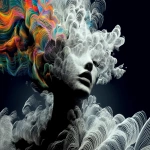
](https://images.ai-img.art/thumbnails/150/0ba0be922ab76af53f75ab90126ae2b18a600ee3b96941e8ab897a9f10594e5a.webp)
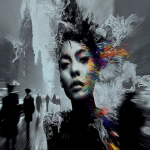





](https://images.ai-img.art/thumbnails/150/ff09e32d2be011c0dd785984c5c1e47839ce551a31da1bde242860b30df2aa30.webp)